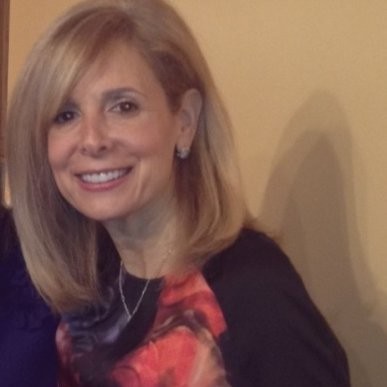4 Ways to Move Toward Gender Parity in Your Company’s Leadership
It’s a problem that won’t go away: Women enter the workforce at the same rate as men, but when it comes to leadership positions they’re still far outnumbered by their male peers.
While employers have long said they’re committed to achieving gender parity in their leadership ranks, only one in four C-suite leaders in the U.S. is a woman, according to McKinsey’s latest Women in the Workplace report. Globally, less than a third of leadership positions are held by women, LinkedIn research shows.
Given these statistics, LinkedIn’s COO Daniel Shapero had a lot to cheer about last year when he announced in a LinkedIn post that the company’s global business organization, which includes sales, support, and operations functions and which he runs, had beaten the odds. Women now occupy 49.4% of leadership roles (director+) around the world, up from about 25% in 2015.
How did LinkedIn tackle the problem of gender inequality and what lessons can we learn from the company’s approach? To get some answers, we spoke to three people who were on the journey: Dan; Fern Mandelbaum, an entrepreneur, professor, and investor who advised LinkedIn on its gender parity efforts; and Lekha Doshi, VP of go-to-market operations at LinkedIn, who rose through the ranks and now manages a team of 1,200 people.
The following are four strategies LinkedIn pursued that every employer should consider.
1. Acknowledge you have a problem
It would be easy to ignore the issue of gender imbalance, especially if you’re running a rapidly growing business. In fact, nearly a decade ago, when the leaders of LinkedIn’s sales team were mostly white men, former LinkedIn head of sales Mike Gamson, didn’t realize he had a problem.
“At one point,” Lekha says, “there were more men named Mike around the leadership table than women at that leadership table.”
A female member of Mike’s organization brought the issue to his attention. This opened his eyes and Mike eventually became the prime mover behind LinkedIn’s gender parity plan.
Back then, “we thought of ourselves as a ‘values-centric’ sales team,” Dan says. “So, it was a real eye-opener to feel the tension between who we thought we were and who we actually were.”
Lekha adds: “Over the last five to eight years, there’s been a consciousness that we need to have a more diverse set of folks around the leadership table. There’s been an understanding that there might be some biases at promotion time and biases when it comes to assigning work.”
2. Make achieving gender parity a business imperative
Mike, who left LinkedIn in 2019, and Dan who succeeded him, prioritized solving the problem of gender inequality, devoting time and resources to finding solutions.
A key effort was the creation of “WiN,” a women’s initiative group tasked with identifying areas that needed improvement. The WiN members determined that to help women rise within the organization, LinkedIn should focus on three things: creating an inclusive culture, investing in women, and changing the talent acquisition process.
Mike worked with the talent acquisition team to build a hiring strategy to move toward gender parity. Together, they focused on systematically broadening the external networks of LinkedIn’s male leadership, on consistently engaging and nurturing highly respected female leadership in the market, and on considering at least one female candidate for every open role at director or above. The LinkedIn sales team leaders also agreed to track and review their progress, much as they would any business venture. LinkedIn monitored the gender makeup of new hires coming into the sales division as well as the gender mix at each level of the organization.
And every year at the company’s global sales kickoff conference, Dan recalls, “I would stand up and say, ‘This is what the numbers were, this is what the numbers are, and next year I’ll show you the numbers again.”
3. Gain insights from employees
Early on, Mike decided to bring in a consultant. A woman on his leadership team suggested Fern, a lecturer at Stanford University Graduate School of Business and Emerson Collective managing director, who advises companies on inclusive leadership and building diverse and inclusive organizations.
Fern conducted interviews of LinkedIn employees and then provided feedback. “I interviewed over 500 people globally at LinkedIn, at all levels of the organization globally,” Fern says, “to really understand how everyone was doing.”
The exercise yielded some important revelations. Dan, for instance, learned that some people, especially women, did not respond well to his “intensity” during discussion and debate. As a result, he may have contributed to creating an environment where female members of the sales team didn’t feel comfortable speaking up. Learning he had a problem and adjusting his behavior helped Dan become a more inclusive leader.
“I had this tough realization,” Dan says, “that while I might be presenting my ideas very clearly, I’m actually causing others to disengage from the discussion because I’m bringing an intensity that’s uncomfortable. And that kind of reaction is more prevalent in women than men.”
Fern also ran workshops for LinkedIn leaders to help them uncover their unconscious biases and learn how to think and act more inclusively. Rather than pushing leaders to make major changes all at once, Fern encouraged them to take small steps, such as simply demonstrating empathy for employees.
“We began this campaign,” Fern recalls. “I called it small acts of inclusion.”
4. Foster advancement by pairing women with sponsors
LinkedIn also launched a sponsorship program that matches senior members of the sales team with female protégés.
Sponsorships are widely seen as an important tool for promoting gender parity. In a McKinsey survey of senior female executives, 56% agreed that having a sponsor was a key success factor.
Being a sponsor is like being a mentor but there are differences. Sponsors are often high-level executives who not only coach their protégés but also take an active role in their advancement. And this is particularly important in the service of women, who are less likely to self-promote their accomplishments. Sponsors use their power and influence to ensure that their protégés get important work assignments and promotions.
One of Dan’s protégés was Alyssa Merwin Henderson who over 12 years at LinkedIn has risen to her current position of VP of global sales solutions. “My job was to make sure I was aware of what she was working on,” Dan says, “so when opportunities came up, I could speak about what she was capable of in detail, without her needing to self-promote.”
“This is a really important program,” Dan adds. “Once we saw what these people could do, we started placing them in important roles. They did fantastically well.”
Final thoughts
All four of these actions played an important part in helping the LinkedIn sales team reach gender parity in its leadership ranks.
But even the best programs won’t get organizations very far unless their leaders are truly committed to change. It starts with employers understanding that having diverse teams and diverse leadership isn’t just the right thing to do, but it’s critical to succeeding in business.
“Mike Gamson was deeply committed to this,” Fern says. “Many people at LinkedIn wanted to do better.”
Topics: Company culture Career development Talent leadership Diversity
Related articles
Trending
-
To help talent leaders and recruiters better understand the competitive talent landscape, here's an updated list of the most in-demand jobs.
-
LinkedIn data shows the companies with stronger learning cultures have higher rates of retention, internal mobility, and promotions to management.
-
With a skills-based approach to talent becoming more prevalent, recruiters and L&D pros need to highlight their own skills on their LinkedIn profiles.




